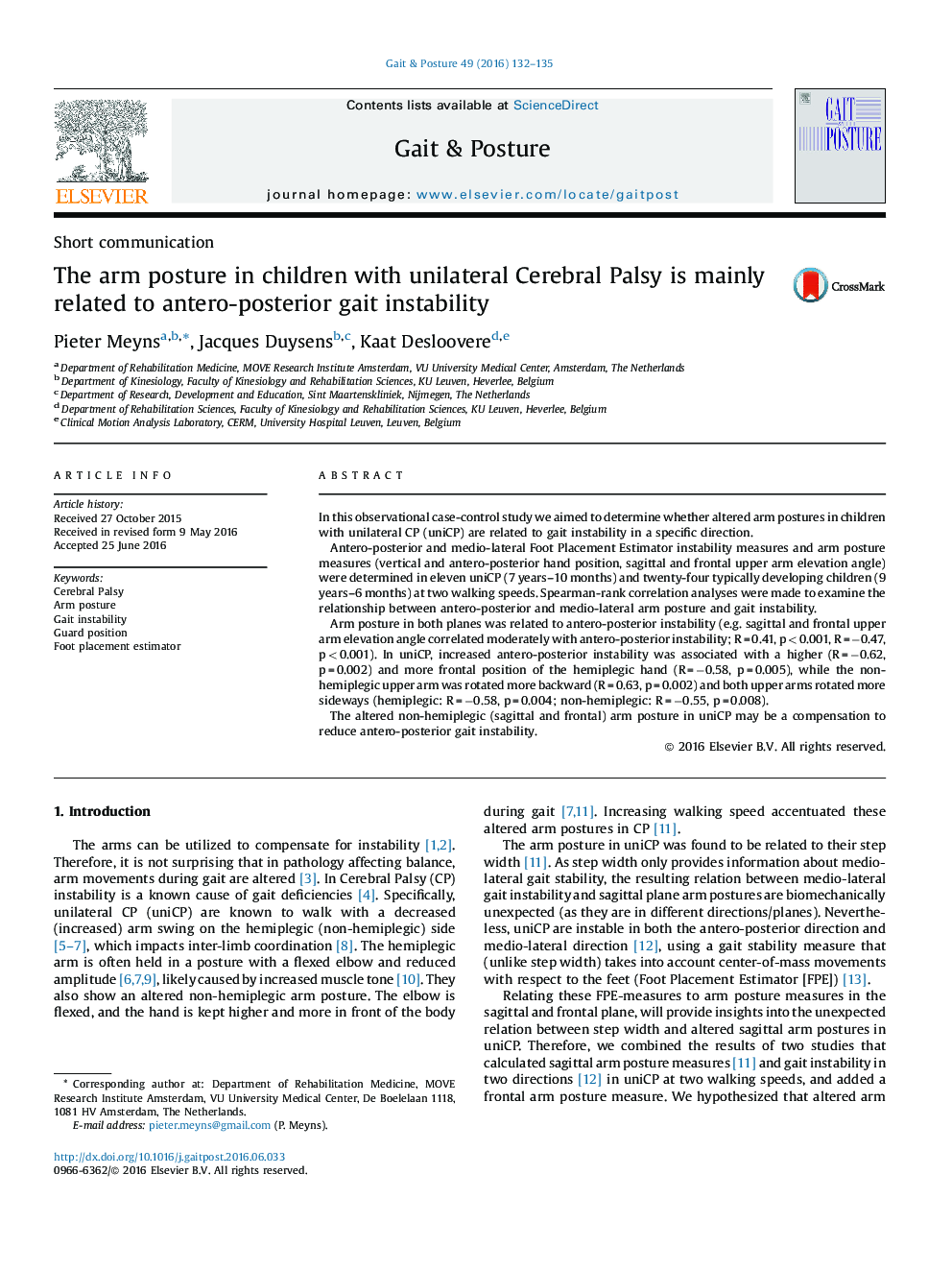| Article ID | Journal | Published Year | Pages | File Type |
|---|---|---|---|---|
| 6205526 | Gait & Posture | 2016 | 4 Pages |
â¢Arm postures are related to gait instability in children with unilateral CP and TD.â¢Arm postures are related to an antero-posterior but not medio-lateral gait instability.â¢The uninvolved arm posture in CP compensates for antero-posterior gait instability
In this observational case-control study we aimed to determine whether altered arm postures in children with unilateral CP (uniCP) are related to gait instability in a specific direction.Antero-posterior and medio-lateral Foot Placement Estimator instability measures and arm posture measures (vertical and antero-posterior hand position, sagittal and frontal upper arm elevation angle) were determined in eleven uniCP (7 years-10 months) and twenty-four typically developing children (9 years-6 months) at two walking speeds. Spearman-rank correlation analyses were made to examine the relationship between antero-posterior and medio-lateral arm posture and gait instability.Arm posture in both planes was related to antero-posterior instability (e.g. sagittal and frontal upper arm elevation angle correlated moderately with antero-posterior instability; R = 0.41, p < 0.001, R = â0.47, p < 0.001). In uniCP, increased antero-posterior instability was associated with a higher (R = â0.62, p = 0.002) and more frontal position of the hemiplegic hand (R = â0.58, p = 0.005), while the non-hemiplegic upper arm was rotated more backward (R = 0.63, p = 0.002) and both upper arms rotated more sideways (hemiplegic: R = â0.58, p = 0.004; non-hemiplegic: R = â0.55, p = 0.008).The altered non-hemiplegic (sagittal and frontal) arm posture in uniCP may be a compensation to reduce antero-posterior gait instability.
